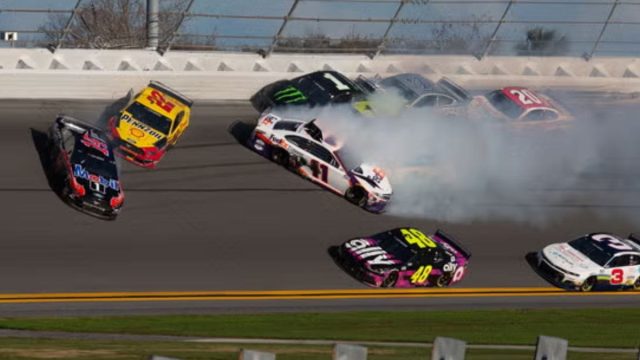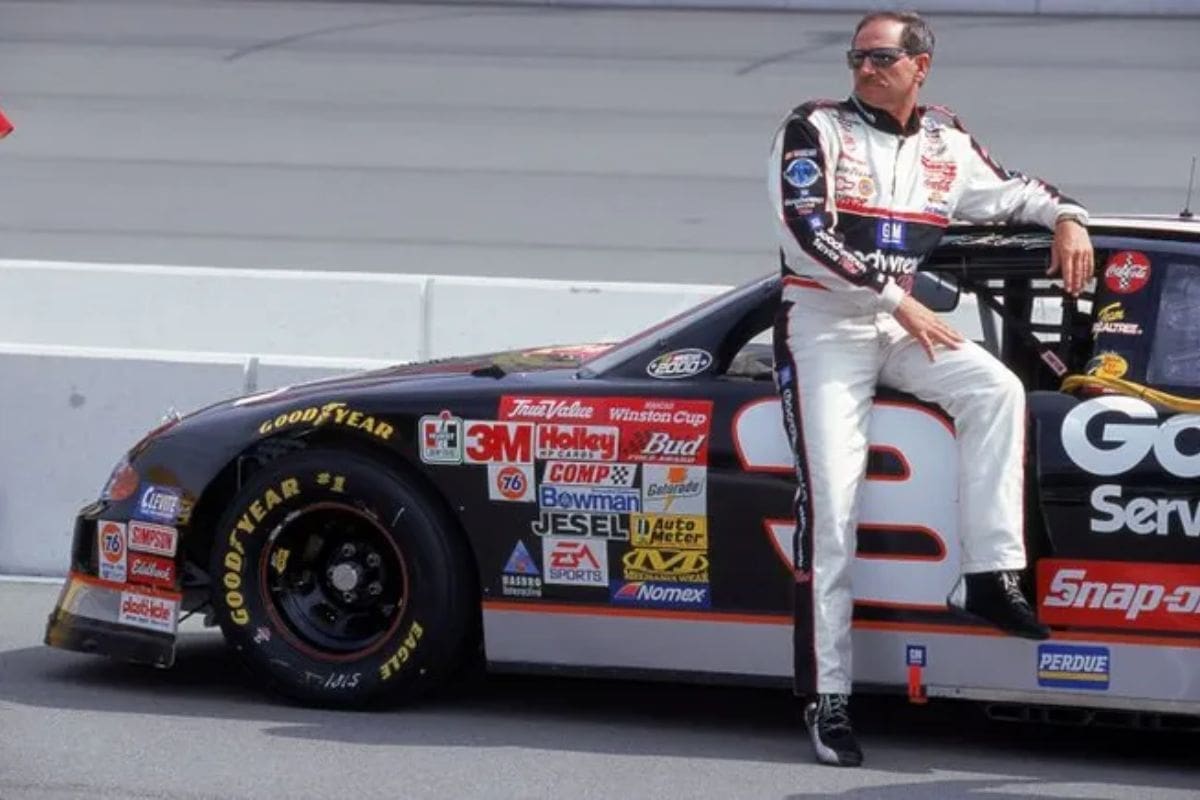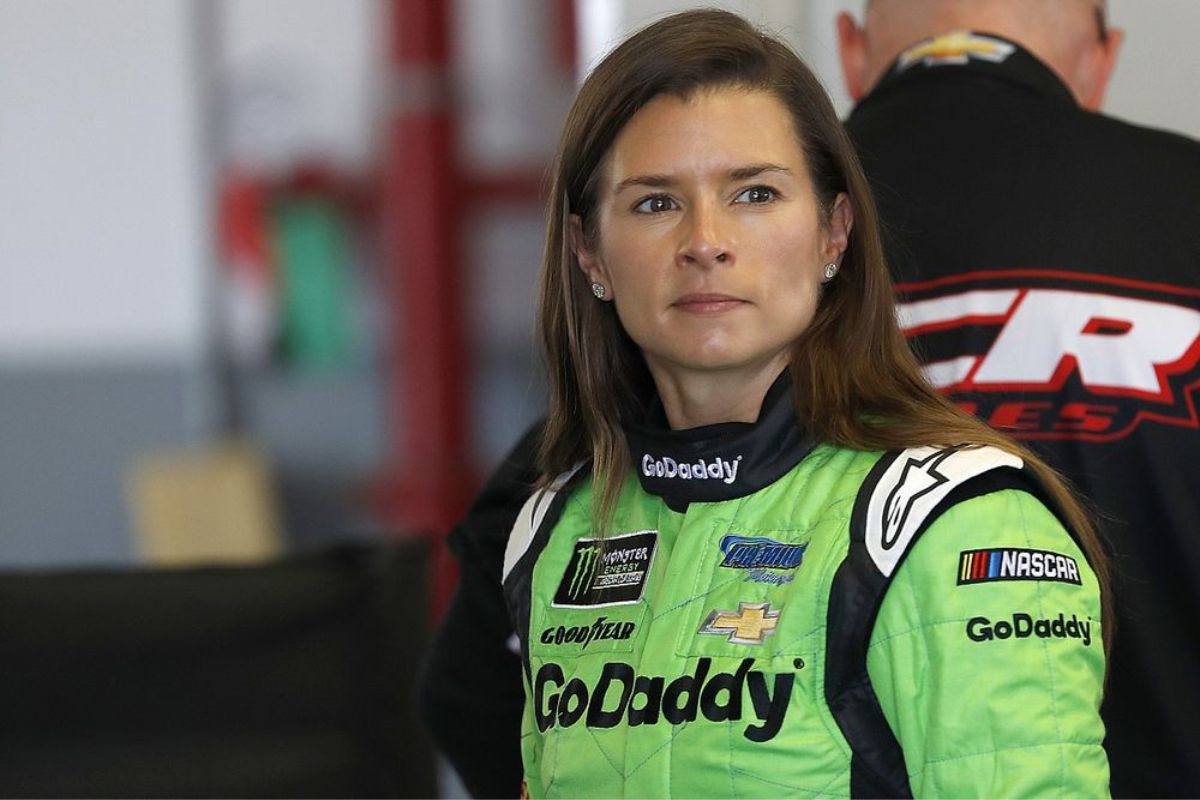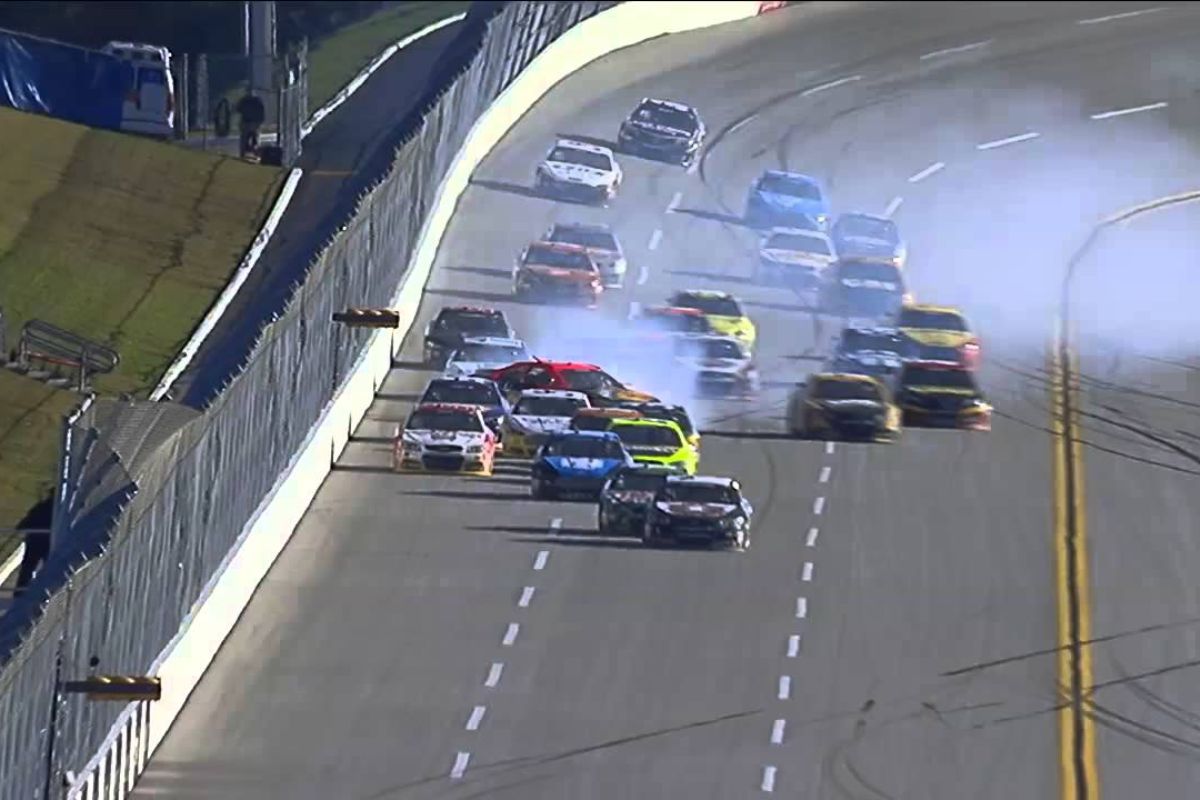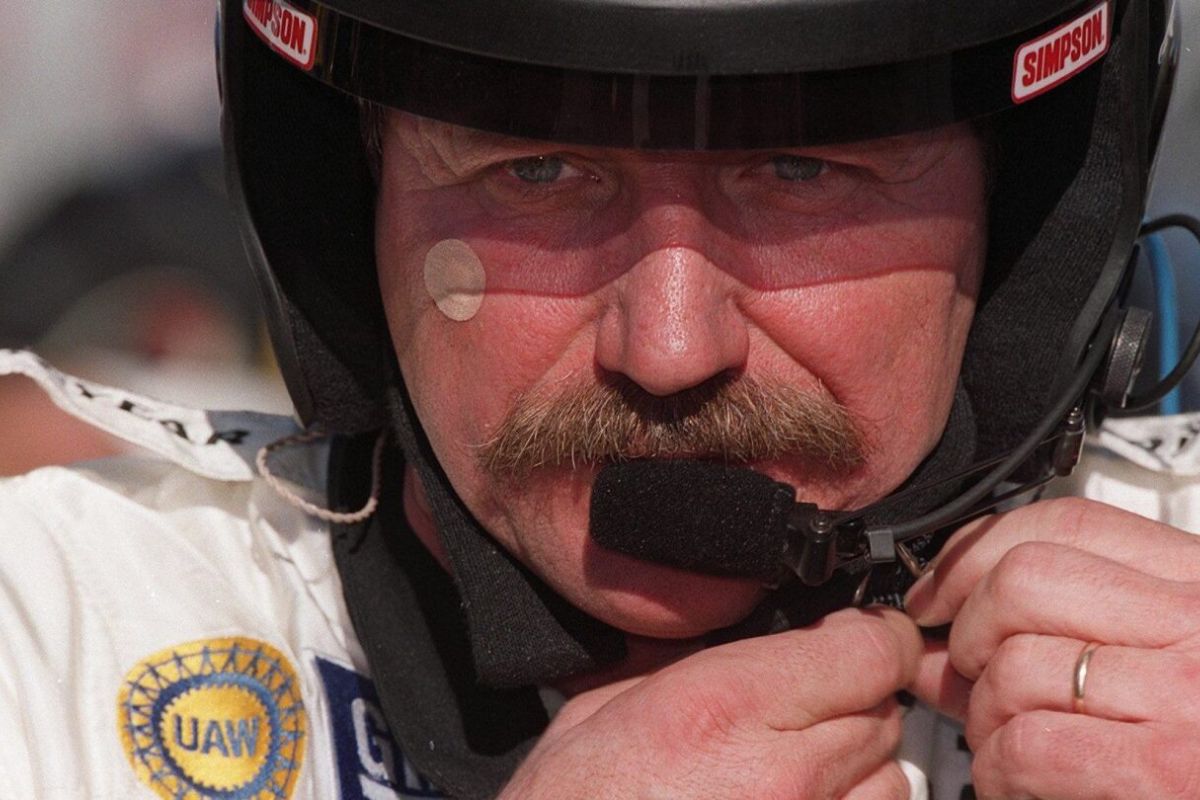7 Most Controversial Moments in NASCAR: Throughout its storied history, NASCAR has been no stranger to controversy, with moments that have not only tested the sport’s integrity but also captivated audiences and ignited passionate debates. From the return of the iconic No. 3 car to the contentious finish at the 2004 Talladega race, each incident has sparked discussions about ethics, safety, and the evolving dynamics within the racing community. As we examine these crucial moments, one must consider how they have shaped the perceptions of fans and the future of NASCAR itself, ultimately raising the question: what does this mean for the sport moving forward?
Key Highlights
- The return of the No. 3 car in 2014 sparked mixed reactions, with fans divided over honoring Dale Earnhardt’s legacy versus disrespecting it.
- The 2008 Brickyard 400 tire debacle exposed safety flaws, overshadowing Jimmie Johnson’s victory and sparking controversy.
- Danica Patrick’s pole win at the 2013 Daytona 500 ignited debates about gender representation and the meritocracy in NASCAR.
- The controversial 2004 Talladega finish, where Jeff Gordon was declared the winner despite Dale Earnhardt Jr. crossing the line first, caused significant fan uproar.
- The 2013 Richmond scandal (‘SpinGate’) involved race manipulation, leading to severe penalties and raising questions about NASCAR’s regulatory oversight.
The Return of the No. 3 Car (2014)
The reintroduction of the iconic No. 3 car in NASCAR during the 2014 season sparked a profound debate among fans and the racing community, intertwining nostalgia for Dale Earnhardt’s legacy with questions about the appropriateness of resurrecting a number synonymous with tragedy. This moment marked the initial time since the fateful day in 2001 that the number would be used in the Cup Series, a decision met with a spectrum of reactions.
At the heart of the discussion was Austin Dillon, driving the No. 3 for Richard Childress Racing, who is also the grandson of team owner Richard Childress. Dillon’s securing of the pole position at the Daytona 500 was laden with symbolic significance, evoking memories of Earnhardt’s storied career and the matchless impact he had on NASCAR. For many, this return was a poignant tribute, a way to honor a driver whose influence still resonates in the sport.
Conversely, a substantial faction viewed the move as premature or disrespectful, arguing that the number should remain retired out of respect for the tragic loss of Earnhardt. This dichotomy illuminated the broader tensions within NASCAR regarding legacy, memory, and the commercialization of tragedy.
The 2008 Brickyard 400 Tire Debacle
In 2008, the Brickyard 400 became infamous not for its racing drama but for a tire debacle that exposed considerable flaws in NASCAR’s partnership with Goodyear, fundamentally altering the perception of both the event and the sport’s commitment to safety and performance. The race, held at the venerable Indianapolis Motor Speedway, was blemished by a series of tire blowouts, primarily occurring after just 10 to 12 laps. This prompted NASCAR to issue multiple competition cautions, disrupting the flow of the event and leading to heightened frustration among drivers and fans similarly.
Jimmie Johnson ultimately claimed victory, but the success was overshadowed by the pervasive safety concerns that tarnished the proceedings. Drivers voiced their discontent, with Tony Stewart articulating a sentiment that resonated throughout the paddock: “It’s a shame that we have to be put in this position by Goodyear.” Such statements highlighted the tension between the sport’s governing body and its tire supplier, raising questions about the adequacy of tire testing and the general reliability of the equipment used in races.
This controversy not only tainted the Brickyard 400’s legacy but also ignited a broader dialogue regarding NASCAR’s prioritization of performance over safety. The fallout from the tire debacle forced NASCAR and Goodyear to reevaluate their strategies, leading to notable changes in tire specifications and testing protocols in subsequent seasons.
Danica Patrick’s Pole Win at Daytona 500 (2013)
Achieving pole position at the 2013 Daytona 500, Danica Patrick not only broke new ground as the primary woman to secure this prestigious starting spot but also ignited a complex dialogue surrounding gender representation and the meritocracy within the highly competitive domain of NASCAR. This milestone was celebrated as a notable achievement for women in motorsports; however, it also provoked skepticism and controversy.
Critics questioned whether Patrick’s success stemmed from her driving skill or the resources of her well-funded team. While numerous male drivers had enjoyed long careers and multiple pole positions without securing a race win, Patrick’s subsequent performance raised doubts about her capabilities and the authenticity of her achievement. This sparked heated discourse on whether her pole position was a genuine milestone or merely a publicity stunt.
Despite the surrounding controversy, Patrick’s accomplishment remains a vital moment in NASCAR history, marking a step towards greater inclusivity and representation in motorsports.
Richard Petty’s 199th Win
Controversy surrounds Richard Petty‘s celebrated 1983 victory at Charlotte Motor Speedway, as many fans and insiders argue that the circumstances of the win undermine the integrity of what would eventually be recorded as his 199th win. This crucial moment in NASCAR history ignited debate about the legitimacy of Petty’s achievements, particularly as it relates to the sport’s regulatory framework.
During the race, Petty’s car was found to possess an oversized engine and illegal tires, violations that had previously resulted in notable penalties for other competitors like Tim Richmond. Despite these infractions, NASCAR allowed Petty’s win to stand, a decision that many perceive as inconsistent and unfair. The subsequent fine of $35,000 and the docking of 104 points further complicate the narrative, leading some to question whether Petty’s victory should be considered legitimate.
This incident not only casts a shadow over Petty’s iconic status but also raises broader questions regarding NASCAR’s enforcement of rules and the perceived favoritism shown towards certain drivers. As a result, while Petty’s 199th win remains a celebrated milestone, the controversy surrounding it continues to resonate within the community.
The 2004 Talladega Finish
The 2004 Talladega finish remains one of the most contentious moments in NASCAR history, as it encapsulates the tension between adherence to evolving regulations and the passionate allegiances of fans.
In a race marked by intense competition, Jeff Gordon and Dale Earnhardt Jr. found themselves in a fierce battle for supremacy on the final lap. As they navigated the last turn, a crash involving another competitor triggered a caution flag, leading to a controversial resolution.
Despite Earnhardt Jr.’s apparent victory, crossing the finish line just ahead of Gordon, the race officials ruled that the caution had effectively ended the race. According to NASCAR’s then-current regulations, the leader at the time of the caution—Gordon—was declared the winner. This decision ignited an uproar among Earnhardt fans, who felt cheated by the circumstances surrounding the finish. Their discontent manifested in dramatic displays of frustration, including the throwing of beer cans onto the track.
This incident not only highlighted the complexities of race regulations but also emphasized the deep emotional investment fans have in their favorite drivers.
The dichotomy between the letter of the law and the spirit of competition remains a recurrent theme in NASCAR, with the 2004 Talladega finish serving as a poignant reminder of the challenges faced by officials in balancing fairness with fan expectations.
The 2013 Richmond Scandal
Noteworthy ramifications followed the 2013 Richmond Scandal, known as ‘SpinGate,’ which exposed the lengths to which teams might go to manipulate race outcomes and secure coveted playoff positions. The incident unfolded during the Federated Auto Parts 400, where Michael Waltrip Racing (MWR) orchestrated a controversial strategy involving Clint Bowyer intentionally spinning his car to trigger a caution flag. This act directly benefitted Bowyer’s teammate, Martin Truex Jr., allowing him to qualify for the Chase for the Sprint Cup.
The scandal ignited outrage within the NASCAR community and prompted an immediate investigation by NASCAR officials. The findings led to considerable penalties against MWR, including a substantial $300,000 fine and the exclusion of Truex from the Chase. NASCAR President Mike Helton’s assertion that the events constituted a “notable attempt to alter the outcome of the race” emphasized the severity of the infraction.
The implications of SpinGate extended beyond individual penalties; they raised essential questions about the integrity of competitive racing. The incident served as a wake-up call, prompting NASCAR to reevaluate its oversight and enforcement mechanisms to prevent similar manipulative tactics in the future.
Additionally, the scandal tarnished the reputations of those involved and instigated discussions around ethical conduct in the sport. Ultimately, the 2013 Richmond Scandal stands as a crucial moment in NASCAR history, highlighting the fine line between strategy and deceit in the pursuit of victory.
Dale Earnhardt vs. Terry Labonte (1999)
In the annals of NASCAR history, the 1999 clash between Dale Earnhardt and Terry Labonte at Bristol Motor Speedway stands out as a defining moment that ignited fierce debate over the ethics of competitive racing. As the race neared its finale, Labonte held a tenuous lead while Earnhardt, relentless in his pursuit, executed a controversial tactic that would forever alter perceptions of sportsmanship in the sport.
The incident unfolded in the final lap, resulting in a spectacular collision that saw Labonte spin into the wall, while Earnhardt claimed victory. This so-called ‘bump-and-run’ strategy, although not explicitly forbidden in short-track racing, raised ethical questions regarding its application in such a critical moment. Earnhardt’s post-race comment, “I didn’t mean to turn him around; I meant to rattle his cage,” only intensified the debate surrounding his actions.
Key takeaways from this controversial episode include:
- Competitive Integrity: The clash highlights the fine line between aggressive racing and unsportsmanlike conduct, provoking discussions on the moral implications of such tactics.
- Fan Reaction: The aftermath of the race illustrated a divided fanbase, with some praising Earnhardt’s tenacity while others condemned his methods as foul play.
- Legacy and Impact: This incident remains a touchstone in NASCAR discussions, influencing how drivers approach competitive interactions and shaping the ongoing conversation about racing ethics.
News in Brief: 7 Most Controversial Moments in NASCAR
The history of NASCAR is marked by a series of controversial moments that have prompted intense discussions regarding integrity, ethics, and safety within the sport.
Each incident, from the return of the iconic No. 3 car to the contentious finishes and scandals, reflects the complex interplay of competition, fan engagement, and regulatory oversight.
These events not only shaped public perception but also influenced the evolution of NASCAR, emphasizing the sport’s inherent challenges and the passionate debates that surround it.
ALSO READ: NASCAR Controversial Past: Legendary Moments of Rule-Bending Ingenuity
